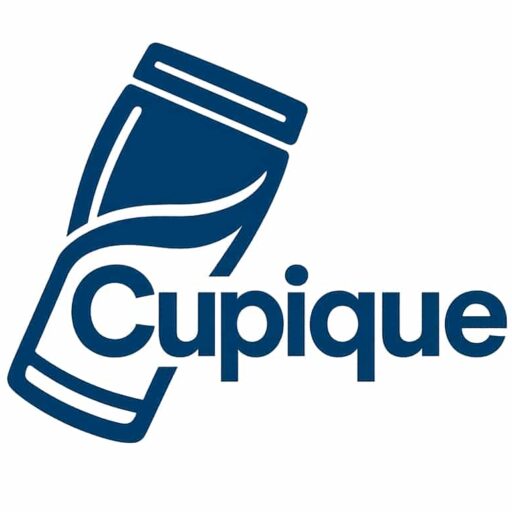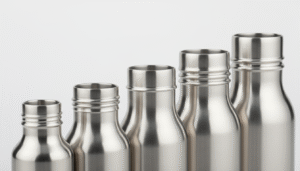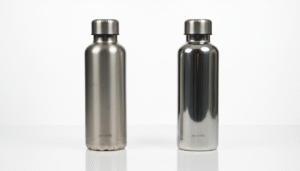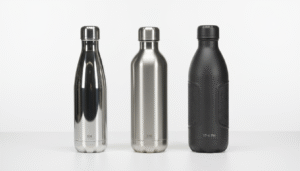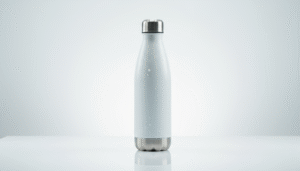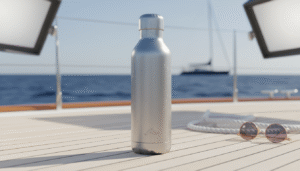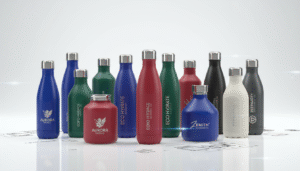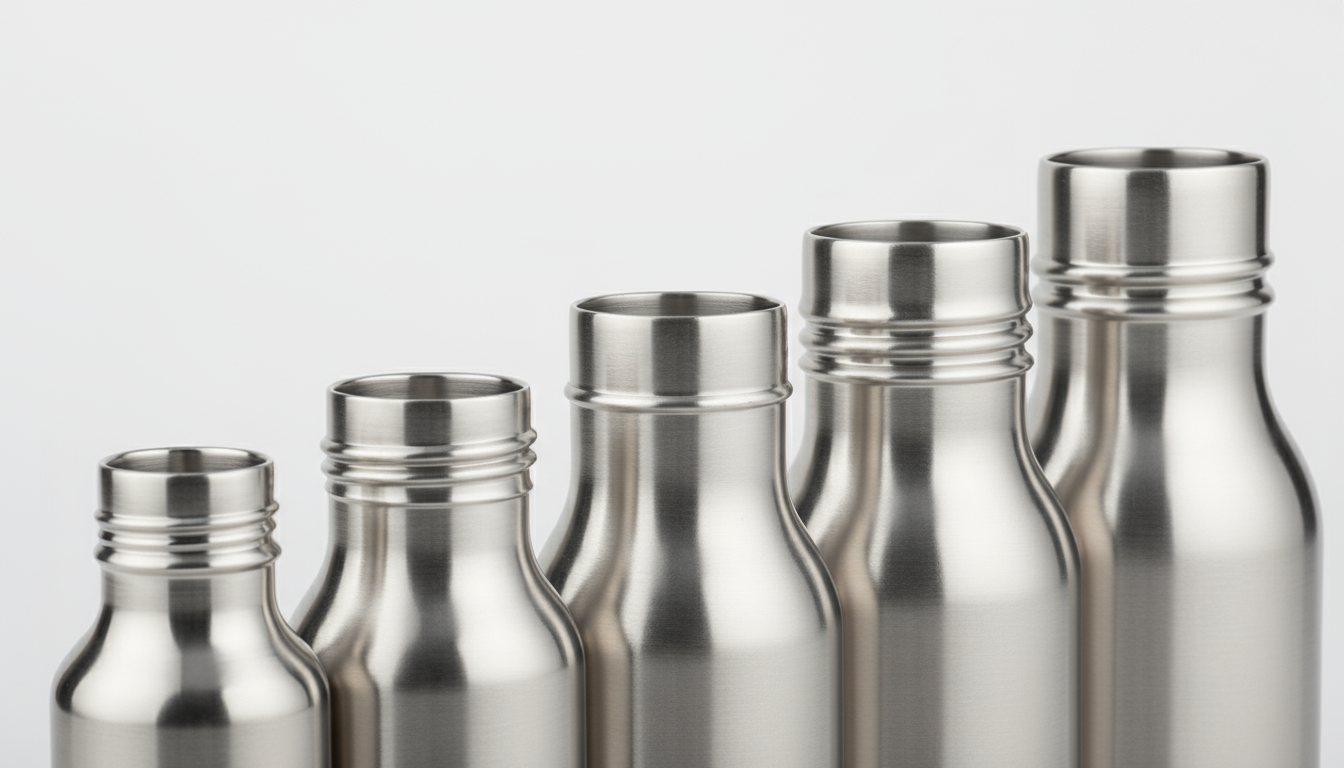
Water bottle threads come in several common sizes, not one universal standard. The most popular sizes include 28mm, 32mm, 38mm, 54mm, and 63mm neck finishes. Each size serves different market needs and affects your product's compatibility with caps and accessories.
I run a stainless steel bottle factory in China. We produce over 3 million units every year. I see buyers make the same thread size mistakes repeatedly. Let me show you how to get this right from the start.
Water bottle threads come in several common sizes, not a single universal standard.True
The text explicitly states there is no one universal standard for water bottle threads.
All water bottles use a universal thread size, ensuring caps are always interchangeable.False
The text clearly states there is no universal standard and lists multiple common sizes.
How to Measure Bottle Thread Size
You need the right measurement to avoid costly sourcing errors. Most buyers measure only the diameter. This creates problems later when caps don't seal properly.
To measure bottle thread size correctly, use digital calipers to measure the outer thread diameter (T dimension), inner neck diameter (I dimension), and thread pitch. The neck finish specification combines all three measurements, like "54mm with 2.0mm thread pitch."
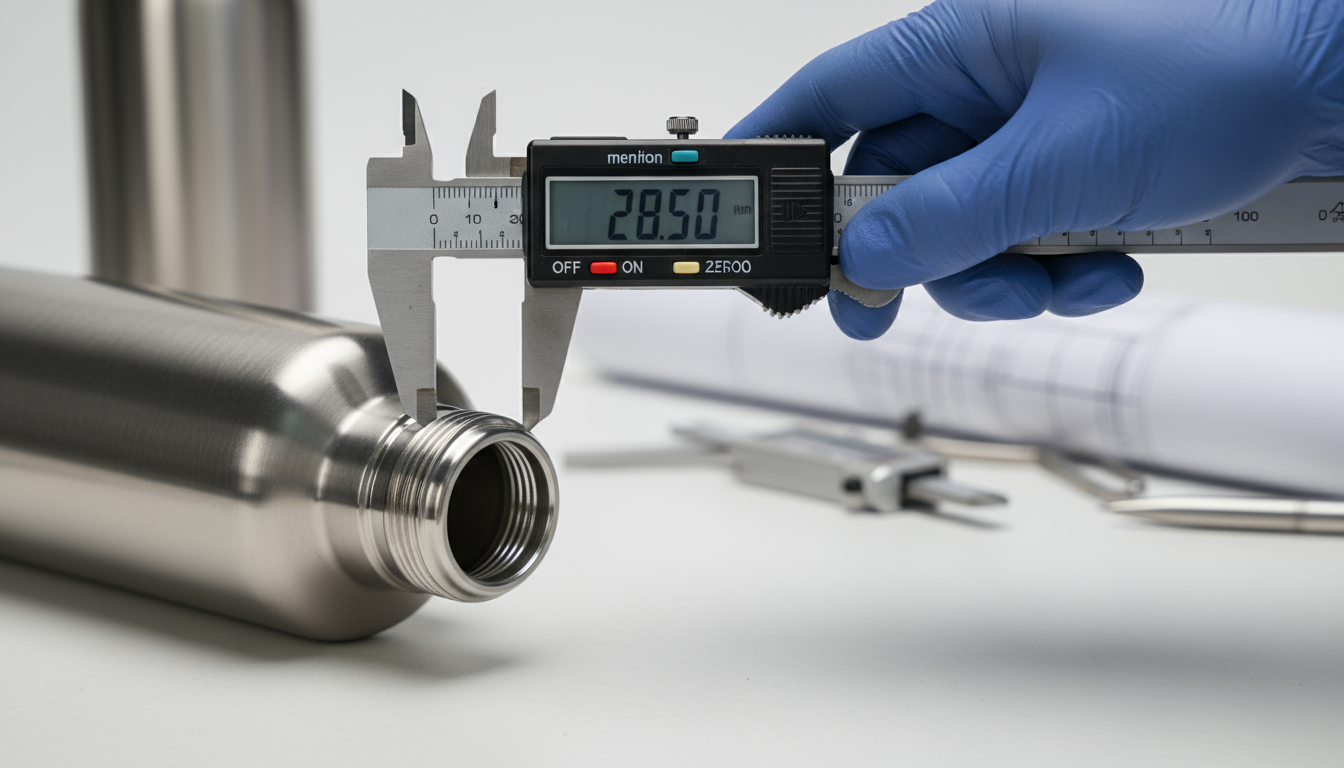
The Complete Measurement Process
I teach my clients to follow these exact steps. First, get digital calipers. A basic digital caliper costs around $20. Don't rely on a tape measure. The accuracy is not enough.
Measure the outer diameter of the thread1. This is the "T" dimension in our industry. Place the caliper jaws on the highest points of the thread. Record this number.
Next, measure the inner diameter of the bottle neck. This is the "I" dimension. Place the caliper inside the bottle opening. Measure at the widest point.
Finally, check the thread pitch. This tells you the distance between thread peaks. Use a thread pitch gauge or count how many complete threads exist in 10mm, then divide.
Here's what matters more than just measuring: you need to define tolerances. A 54mm neck might vary by +/- 0.2mm in mass production. I've seen orders fail because buyers didn't specify acceptable ranges.
| Measurement Type | What to Measure | Tool Needed | Typical Tolerance |
|---|---|---|---|
| Outer Thread (T) | Thread peak diameter | Digital caliper | +/- 0.2mm |
| Inner Neck (I) | Inside opening | Digital caliper | +/- 0.2mm |
| Thread Pitch | Distance between peaks | Pitch gauge | +/- 0.1mm |
| Height | Neck height | Digital caliper | +/- 0.5mm |
Your spec sheet sent to the factory must include all these dimensions. I always request golden samples before mass production starts. We test 10-20 bottles from the sample batch. Every dimension must fall within the tolerance range. This prevents issues when you order 50,000 units.
Correct bottle thread measurement requires outer diameter, inner diameter, and thread pitch.True
The snippet explicitly states these three measurements are needed for correctness.
Measuring only the bottle's diameter is sufficient for correct thread sizing.False
The text warns that measuring only diameter leads to problems like caps not sealing properly.
What Size Is a Standard Bottle Cap
The word "standard" misleads many B2B buyers. There is no single universal cap size. This confusion causes real supply chain problems.
The most common bottle cap sizes are 28/400, 32mm, 38/400 for narrow mouths, and 48mm, 54mm, 63mm for wide mouths. Each serves different markets. The number indicates the outer thread diameter in millimeters.
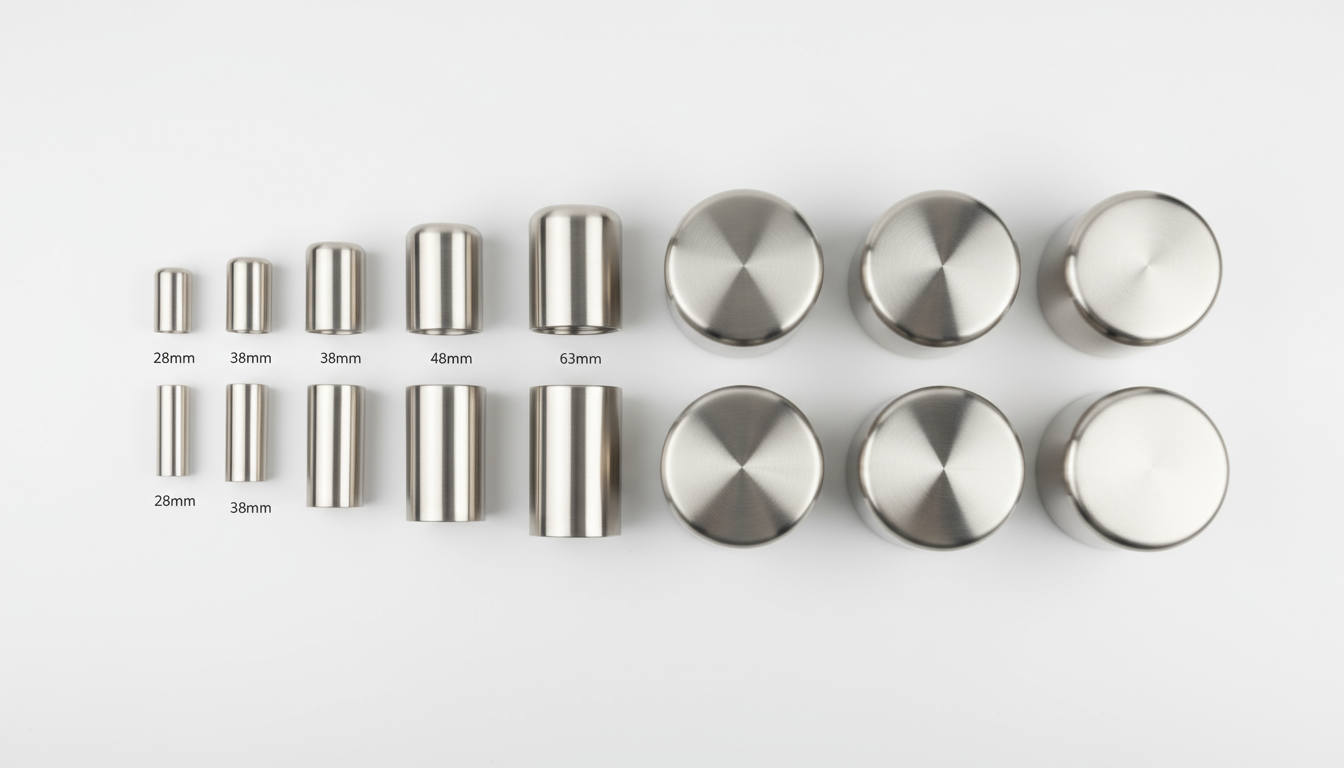
Understanding "Common" vs. "Standard" Sizes
I need to be clear about something. When buyers ask for "standard" sizes, they usually mean "common" sizes. These are different concepts.
Common sizes exist because many manufacturers use them. The 28/400 finish works for many beverage bottles. The 54mm wide mouth became popular because of certain outdoor brands2. These sizes are easy to source.
But "standard" suggests a universal specification. This doesn't exist in our industry. A 54mm neck from one factory might not perfectly match a 54mm cap from another factory. The thread pitch could differ. The thread depth could vary.
Here's my advice from 10 years in this business: source your bottles and caps from the same supplier. This eliminates compatibility risk. If you must source separately, get exact specifications. Don't rely on just the diameter number.
Popular Neck Finishes by Market
| Neck Size | Common Names | Best For | Market Trend |
|---|---|---|---|
| 28mm | 28/400, PCO 1810 | Beverage bottles, sports drinks | Declining |
| 32mm | 32/410 | Juice bottles, protein shakes | Stable |
| 38mm | 38/400 | Wide beverage opening | Growing slowly |
| 48mm | 48mm wide mouth | Outdoor bottles | Stable |
| 54mm | 54mm wide mouth | Outdoor, fitness, office | Strong growth |
| 63mm | 63mm wide mouth | Large capacity bottles | Growing |
The 54mm wide mouth dominates the US and European markets right now3. I produce more 54mm bottles than all other sizes combined. The reason is simple: people want to add ice cubes. They want to clean their bottles easily. They want to use accessories like fruit infusers.
No single universal bottle cap size exists.True
The text explicitly states there is no single universal cap size.
There is one universal standard bottle cap size.False
The article explicitly states there is no single universal cap size.
What Size Is a Water Bottle Bolt Thread
Many clients use this term when contacting me. "Bolt thread" is not the correct industry term. This creates confusion with suppliers.
The correct term is "neck finish" or "thread profile." Water bottle threads use specialized beverage industry specifications, not standard bolt threads. Using precise terminology with suppliers ensures you get the right product specifications.
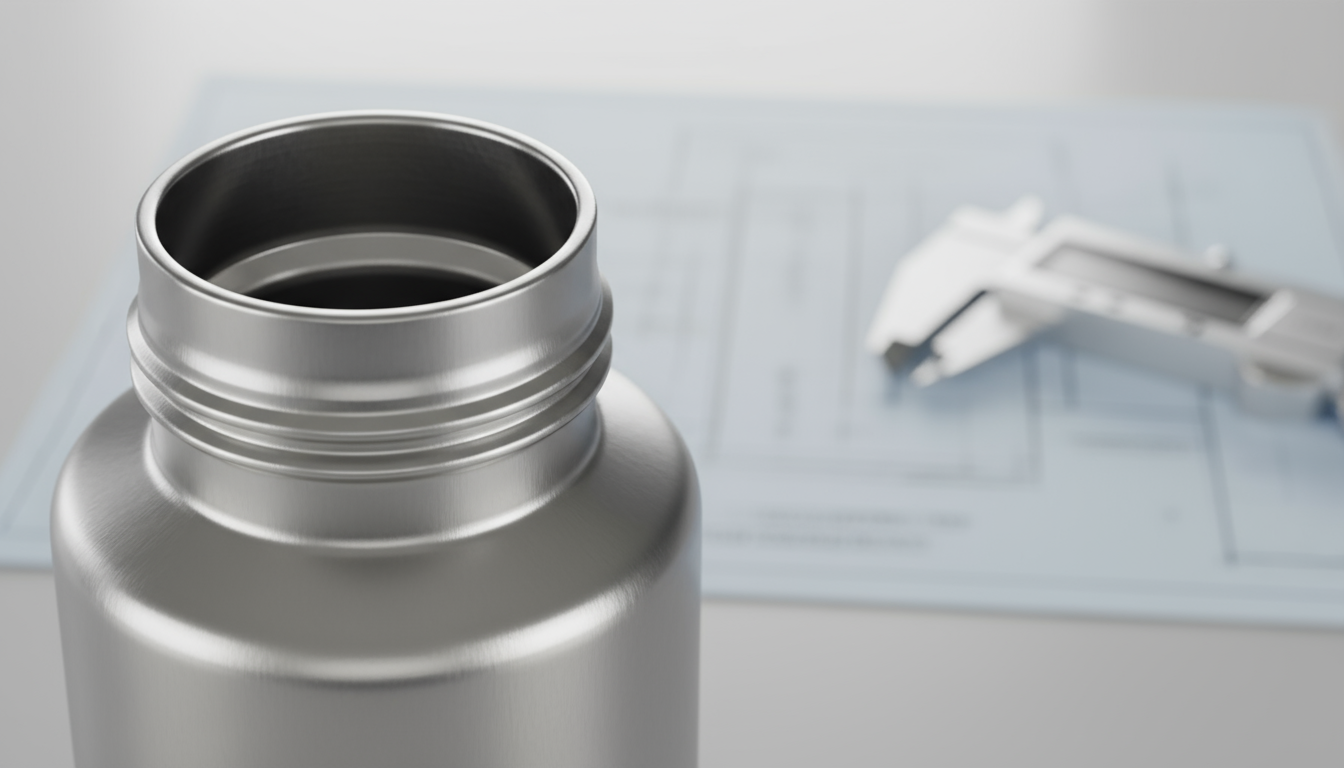
Why Terminology Matters in B2B Sourcing
Last month, a buyer contacted me asking for "M54 bolt threads." I knew what he wanted, but his confusion showed a bigger problem. Using the wrong terms creates risks.
When you say "bolt thread," suppliers might think you want metric screw threads. These follow ISO standards like M54x24.0. But bottle threads are completely different. They're designed for sealing and easy opening, not for mechanical strength.
Bottle threads are shallower5. The pitch is different. The thread angle varies from standard bolts. A bottle cap needs to seal liquid while remaining easy to twist off. A bolt needs to hold things together under stress.
Correct Terms to Use
Here's what I tell new buyers to say:
Instead of: "What bolt size fits this bottle?"
Say: "What is the neck finish specification?"
Instead of: "I need M54 threads"
Say: "I need a 54mm neck finish with 2.0mm thread pitch"
Instead of: "Standard cap thread"
Say: "28/400 neck finish" or "54mm wide mouth neck"
| Wrong Term | Correct Term | Why It Matters |
|---|---|---|
| Bolt thread | Neck finish | Bolt threads follow different standards |
| Screw size | Thread specification | Too vague for production |
| Cap diameter | Neck finish diameter | Diameter alone isn't enough |
| Standard thread | Specific neck finish code | No true universal standard exists |
Using the right words prevents mistakes. I've seen orders delayed by weeks because of miscommunication. The factory produces the wrong specification. You reject the order. Everyone loses time and money.
Water bottle threads are properly called 'neck finish' or 'thread profile'.True
The text states these are the correct industry terms for water bottle threads.
'Bolt thread' is the correct industry term for water bottle threads.False
The text explicitly states 'bolt thread' is not the correct industry term.
What Is the Standard Bottle Neck Size
Your choice of neck size affects everything from manufacturing cost to market positioning. This decision impacts your business more than most buyers realize.
The most popular bottle neck sizes vary by market: 28mm-38mm for traditional beverages, 54mm-63mm for wide-mouth bottles in sports and outdoor markets. There is no single "standard," but 54mm wide mouth currently dominates the reusable bottle market in Western countries.
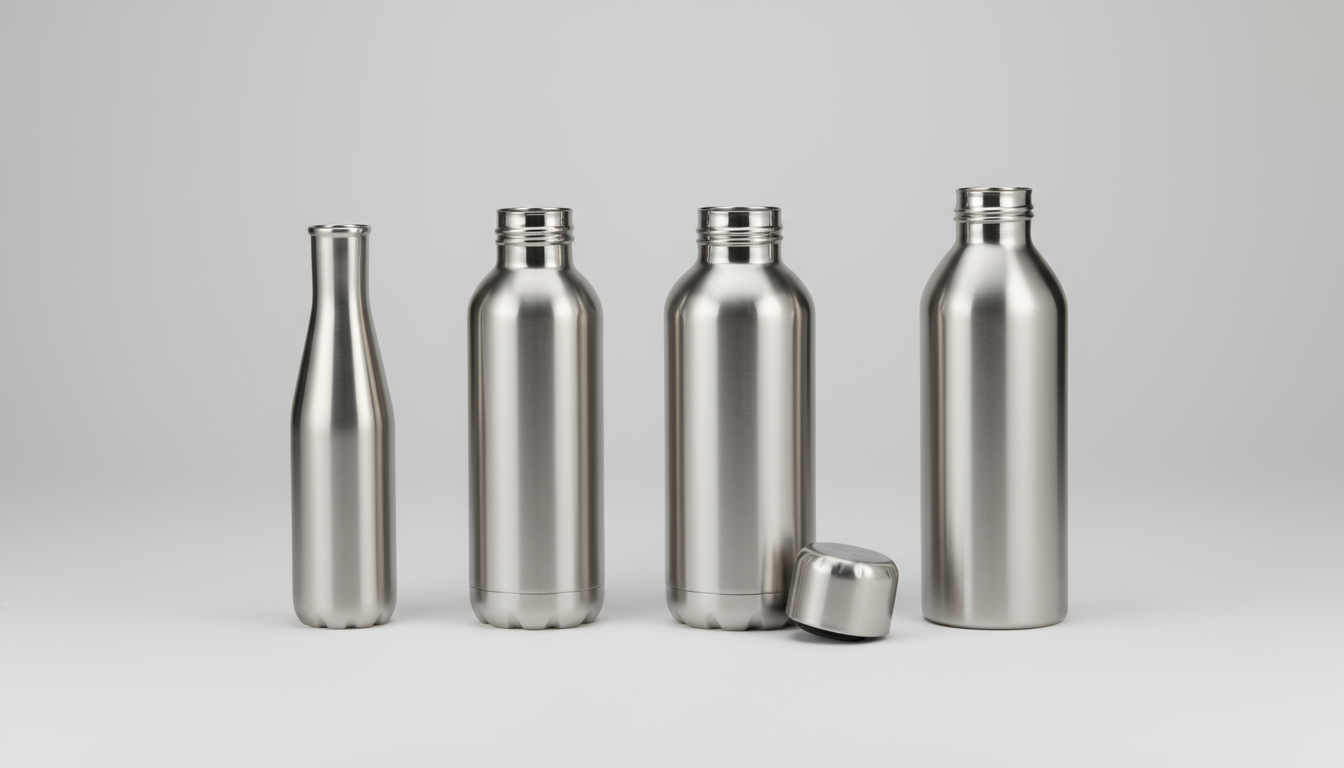
Strategic Implications of Neck Size Choice
I guide clients through this decision every week. The neck size you choose affects five critical areas of your business.
Manufacturing Costs: Common sizes like 28/400 or 54mm have readily available tooling. Many factories own these molds already. This means lower costs for you. I can offer better pricing on 54mm bottles because I use this tooling constantly.
Custom or unusual sizes require new molds. This adds $3,000 to $8,000 to your upfront costs6. You also lose supplier flexibility. Only factories with your custom mold can produce reorders.
Supply Chain Flexibility: Popular neck finishes give you options. If one supplier has problems, you can switch to another. They likely have compatible tooling.
Proprietary sizes lock you in. This increases risk. I'm honest with small brands: start with common sizes. You can develop custom specifications later when volume justifies the investment.
Market Positioning: Neck size signals who your product serves.
Neck Size by Target Market
| Neck Type | Size Range | Target Customer | Key Advantage | Main Drawback |
|---|---|---|---|---|
| Narrow mouth | 28-38mm | Commuters, gym users, cyclists | Easy drinking, less spillage | Hard to clean, no ice cubes |
| Standard wide | 48-54mm | General outdoor, office, students | Ice cube compatible, easier cleaning | Slightly bulkier cap |
| Extra wide | 60-70mm | Serious hikers, camping, home use | Very easy to clean, maximum versatility | Heavier, more expensive |
Accessory Ecosystem: The 54mm wide mouth has the richest accessory market. Third-party manufacturers make straw lids, coffee lids, flip tops, and more. Your customers can customize their bottles.
Narrow mouths have fewer options. This limits your product's versatility. Some brands turn this into an advantage. They develop proprietary necks and sell high-margin branded accessories. This creates customer lock-in.
But this strategy needs significant investment. You need strong branding. You need the volume to justify accessory development costs. For most new brands, I recommend starting with 54mm. The accessory ecosystem already exists.
User Experience: Narrow mouths work better for drinking while moving. Cyclists prefer them. Runners like them. Less water splashes out.
Wide mouths serve different needs. People want to add ice. They want to put fruit in their water. They want to clean the bottle thoroughly. These users choose 54mm or wider.
The North American market strongly prefers wide mouths right now7. The European market shows the same trend but slightly behind. Asian markets still use more narrow mouths for daily commuting.
My Recommendation for New Brands
Choose 54mm wide mouth for your first product. Here's why:
This size gives you the largest addressable market. Manufacturing costs stay reasonable. You have multiple supplier options. Accessories are readily available. Users can add ice and clean easily.
Once you establish sales, consider adding a narrow mouth option for specific use cases. This serves different customer segments. But start with what sells best.
No single standard bottle neck size exists; popular sizes vary by market.True
The text explicitly states 'There is no single "standard"' and lists varying popular sizes.
54mm is the universal standard neck size for all bottle types and markets.False
54mm dominates reusable bottles in Western countries, not all bottle types or markets.
Conclusion
Understanding bottle thread sizes prevents costly sourcing mistakes. Choose common neck finishes like 54mm to minimize costs and maintain supply chain flexibility. Always specify exact thread dimensions and tolerances in your technical specifications.
-
Details thread dimensions, including 'T,' for water bottle caps. ↩
-
Market report details trends and drivers for stainless steel water bottle features. ↩
-
Provides market data supporting wide mouth bottle dominance. ↩
-
Defines bottle neck thread finishes, the ISO standard subject. ↩
-
Confirms unique bottle thread dimensions, pitch, and angle specifications. ↩
-
Explains manufacturing costs contributing to these upfront expenses. ↩
-
Report analyzes North American consumer preference for wide mouths. ↩
